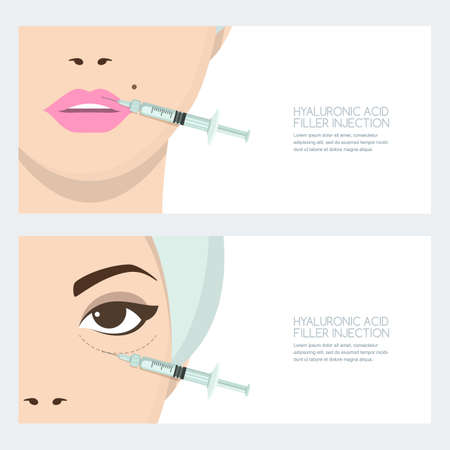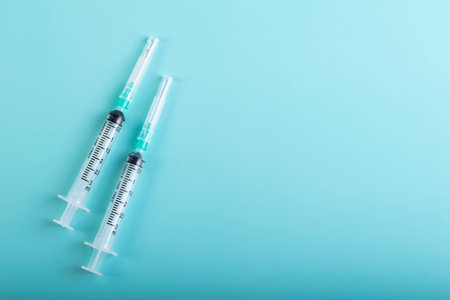Introduction to Male Hair Loss in the UK
Hair loss is a common concern for men across the United Kingdom, affecting individuals from all walks of life. In fact, studies suggest that approximately two-thirds of British men will experience some degree of hair thinning or balding by the age of 35. This prevalence makes hair loss more than just a personal issue—it’s a widespread phenomenon with significant cultural undertones. In British society, a full head of hair is often associated with youthfulness, confidence, and vitality. The gradual loss of hair can therefore carry emotional weight, sometimes impacting self-esteem and social interactions. From pub conversations to banter at the workplace, receding hairlines and thinning crowns are frequently discussed topics among mates. While some men embrace their changing looks with humour or opt for the clean-shaven style popularised by celebrities, others seek effective solutions to restore their hair. This cultural backdrop has fuelled growing interest in advanced treatments such as Platelet-Rich Plasma (PRP) therapy and mesotherapy, both touted as promising options for tackling male pattern baldness. Understanding the social context and common concerns around hair loss is essential when considering which treatment might be best suited for British men today.
2. What is PRP Therapy?
Platelet-Rich Plasma (PRP) therapy has gained increasing attention across the UK as a non-surgical solution for hair loss, especially among British men looking for alternatives to traditional treatments. PRP is essentially a procedure that uses your own blood, processed to concentrate the platelets, which are then injected into areas of thinning hair. The idea behind this is straightforward: platelets are rich in growth factors that can potentially stimulate dormant hair follicles and encourage healthier hair growth.
The process begins with a small sample of your blood drawn at the clinic. This sample is then spun in a centrifuge to separate the platelet-rich plasma from other components. Once prepared, the PRP is injected with fine needles into targeted areas of the scalp where thinning or shedding occurs. The procedure itself is relatively quick, usually taking less than an hour, and because it uses your own biological material, there is minimal risk of allergic reaction or rejection.
What British Men Can Expect
For British men considering PRP therapy, it’s important to have realistic expectations. The treatment does not produce instant results; rather, gradual improvements may be noticed over several months as the growth factors work to rejuvenate hair follicles. Most clinics recommend a series of sessions—typically three to four treatments spaced about a month apart—followed by maintenance appointments every few months.
| Aspect | Details |
|---|---|
| Treatment Duration | 30-60 minutes per session |
| Downtime | Minimal – return to work same day |
| Pain Level | Mild discomfort; numbing cream available |
| Results Timeline | Noticeable after 3-6 months |
| Suitability | Mainly for early-to-moderate male pattern baldness |
| Risks & Side Effects | Mild swelling, redness, possible bruising at injection sites |
Why PRP Appeals to British Men
The appeal of PRP therapy in Britain lies in its combination of scientific logic and low invasiveness. There’s no need for surgery or daily medication, which fits well with busy lifestyles and the preference for subtle, natural-looking results among many UK men. Still, while research into PRP’s effectiveness continues, anecdotal reports suggest a noticeable improvement in hair thickness and density for many patients.

3. Understanding Mesotherapy for Hair Loss
Mesotherapy has emerged as a notable contender in the battle against hair loss, particularly among British men seeking less invasive alternatives. Originally developed in France, this treatment involves microinjections of a bespoke cocktail—typically containing vitamins, minerals, amino acids, and sometimes medications—directly into the scalp’s mesodermal layer. The aim is to nourish hair follicles, stimulate circulation, and promote healthier hair growth from within.
In terms of procedure, mesotherapy sessions are usually quick and relatively comfortable. A clinician uses a fine needle or a specialised mesotherapy gun to deliver the solution across thinning areas of the scalp. Most sessions last around 30 to 45 minutes, with minimal downtime, making it an appealing lunchtime procedure for busy professionals. A typical course may involve 6-10 treatments spaced weekly or fortnightly, followed by occasional maintenance sessions thereafter.
The adoption of mesotherapy in UK clinics has grown over recent years, reflecting both increased demand for non-surgical hair restoration options and advancements in technique. Many British clinics now offer tailored mesotherapy blends designed to address common causes of hair loss seen in local populations—such as stress, environmental factors, and nutritional deficiencies. While clinical evidence remains somewhat mixed, anecdotal reports from patients suggest improvements in hair density and scalp health after a full course.
4. Key Differences: PRP vs Mesotherapy
When weighing up Platelet-Rich Plasma (PRP) and mesotherapy for hair loss, British men should consider several core differences. The technique, effectiveness, cost, and side effects of each method can have a significant impact on your decision—especially given the unique context of UK clinics and regulations.
Technique Comparison
| Treatment | How It Works | Session Frequency | Pain/Discomfort |
|---|---|---|---|
| PRP | Your blood is drawn, spun in a centrifuge to isolate platelets, then injected into the scalp. | Typically every 4–6 weeks initially; maintenance sessions every 4–6 months. | Mild discomfort; topical anaesthetic often used. |
| Mesotherapy | A cocktail of vitamins, enzymes, hormones and plant extracts is micro-injected directly into the scalp. | Weekly or fortnightly sessions at first; maintenance varies. | Mild stinging or tenderness; generally well-tolerated. |
Effectiveness in UK Context
Clinical experience in the UK suggests that both treatments can lead to improved hair thickness and reduced shedding. However, PRP has more robust clinical evidence supporting its use, especially in androgenetic alopecia (male pattern baldness). Mesotherapy’s effectiveness can vary widely depending on the formulation used and practitioner skill—regulations in the UK require trained professionals but product quality may differ between clinics.
Cost Considerations
| Treatment | Typical Cost per Session (UK) | Total Initial Course Cost (Est.) | NHS Availability |
|---|---|---|---|
| PRP | £250–£500 | £1,000–£2,000 (4 sessions) | Not available on NHS; private only. |
| Mesotherapy | £100–£300 | £800–£1,200 (8 sessions) | Not available on NHS; private only. |
The initial outlay for PRP is higher but may require fewer sessions long-term. Both treatments are considered cosmetic and not covered by the NHS, making cost a key factor for many British men.
Potential Side Effects and Safety Profile
| Treatment | Common Side Effects | Risk of Allergic Reaction | Downtime Required? |
|---|---|---|---|
| PRP | Soreness at injection site, mild swelling, bruising, rare infection. | Very low (uses your own blood). | No downtime; normal activities resumed same day. |
| Mesotherapy | Soreness, redness, itching, occasional bruising or swelling. | Slightly higher risk due to injectable substances; rare allergic reactions possible. | No formal downtime; some avoid strenuous activity for 24 hours. |
If you have sensitive skin or a history of allergies, discuss these with your clinician. In the UK, reputable clinics will conduct patch testing if needed and follow strict hygiene protocols—always verify a clinic’s CQC (Care Quality Commission) registration before proceeding.
5. Suitability for British Lifestyles
When considering PRP and Mesotherapy as hair loss treatments, it’s important to reflect on how each fits into the typical British lifestyle. Many British men lead busy lives, balancing work commitments, social activities, and often family responsibilities. Both treatments require a commitment of time and money, but there are notable differences in terms of convenience and expectations.
PRP therapy, while more invasive, generally involves fewer sessions—typically once a month for three to four months, followed by maintenance every few months. This may appeal to those who prefer fewer clinic visits and a more straightforward schedule. The downtime is minimal, allowing most men to return to their daily routines without significant disruption.
In contrast, Mesotherapy usually requires more frequent appointments (often weekly at first), which can be challenging for those with demanding schedules or long commutes—especially outside major cities like London or Manchester. However, Mesotherapy sessions are typically shorter and less invasive, which might suit individuals who are hesitant about needles or medical procedures.
From a cultural perspective, British men often favour discreet solutions and subtle improvements over dramatic changes. Both treatments offer gradual results, but PRP is sometimes perceived as being more ‘medical’ due to its use in other regenerative therapies, whereas Mesotherapy is associated with cosmetic clinics and wellness settings. This may influence personal comfort levels and the willingness to discuss treatment openly with peers.
Cost is another consideration: PRP is generally more expensive per session but may require fewer treatments overall. Given the British preference for budgeting and value for money, some may weigh up the initial investment against the frequency of appointments required for Mesotherapy.
Ultimately, choosing between PRP and Mesotherapy comes down to aligning the treatment plan with one’s routine, expectations for subtlety, tolerance for medical procedures, and budgetary preferences—all within the context of daily life in Britain.
6. Expert Opinions and NHS Guidance
When considering hair loss treatments such as PRP (Platelet-Rich Plasma) and mesotherapy, it’s vital to consult trusted sources. UK hair loss specialists and clinics generally agree that both treatments offer potential benefits for certain patients, particularly those in the early stages of male pattern baldness. However, they also stress that results can be variable, depending on individual factors like age, the extent of hair loss, and overall health.
The NHS (National Health Service) provides clear guidance regarding non-surgical hair loss solutions. According to NHS commentary, most cosmetic procedures for hair thinning—including PRP and mesotherapy—are not routinely available on the NHS because there is limited scientific evidence supporting their effectiveness. The NHS advises British men to approach these treatments with realistic expectations and to thoroughly research any clinic or practitioner before proceeding.
Many UK dermatologists and trichologists highlight the importance of a medical assessment prior to starting any treatment plan. They recommend discussing all possible causes of hair loss, including underlying health conditions or nutritional deficiencies, before opting for PRP or mesotherapy. While some private clinics report positive outcomes with both treatments, they usually emphasise that neither method is a guaranteed cure and that ongoing maintenance sessions are often required.
In summary, expert advice in the UK points towards careful consideration, professional consultation, and managed expectations when choosing between PRP and mesotherapy for hair restoration. The consensus is that while these therapies may help some individuals, men should be wary of bold claims and always prioritise safety and evidence-based practice.
7. Making the Right Choice for You
When it comes to deciding between PRP and mesotherapy for hair loss, British men should take a practical and informed approach. Begin by consulting a reputable UK-based trichologist or hair restoration specialist who understands both treatments and can assess your unique needs. Consider your medical history, lifestyle, and how much downtime you can reasonably accommodate—PRP typically requires fewer sessions but may involve more discomfort, while mesotherapy often involves more frequent visits with less post-treatment recovery.
It’s important to set realistic expectations. Neither PRP nor mesotherapy offers a guaranteed cure for hair loss, but both can contribute to improved hair quality and density when chosen appropriately. Ask your practitioner about the typical results they see in men with similar hair types and levels of hair loss, and request before-and-after photos from previous patients treated in the UK.
Budget is another practical factor; PRP treatments tend to cost more per session but may require fewer appointments overall. Check if the clinic offers package deals or interest-free payment plans, which are increasingly common in the UK. Be sure to confirm that all products used meet UK safety standards, especially for mesotherapy cocktails, as regulations here may differ from those abroad.
Lastly, think about aftercare and support. Choose clinics with strong aftercare policies and accessible follow-up services—some British clinics offer digital check-ins or helplines for ongoing advice. It’s also wise to review feedback on UK forums such as Trustpilot or Reddit’s r/HairTransplantsUK to gauge patient satisfaction and transparency.
By carefully weighing these factors—practicalities, expected results, financial commitment, regulatory safety, and aftercare—British men can make an informed decision that aligns with their personal goals and circumstances. The right choice is ultimately one that fits comfortably into your lifestyle while offering the best chance of seeing genuine improvement.


